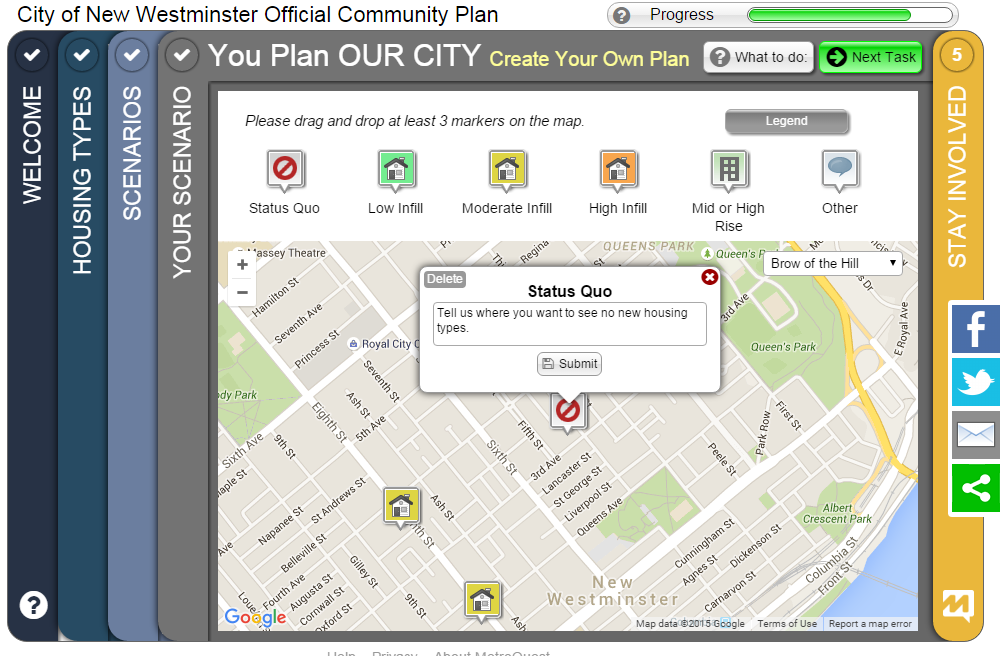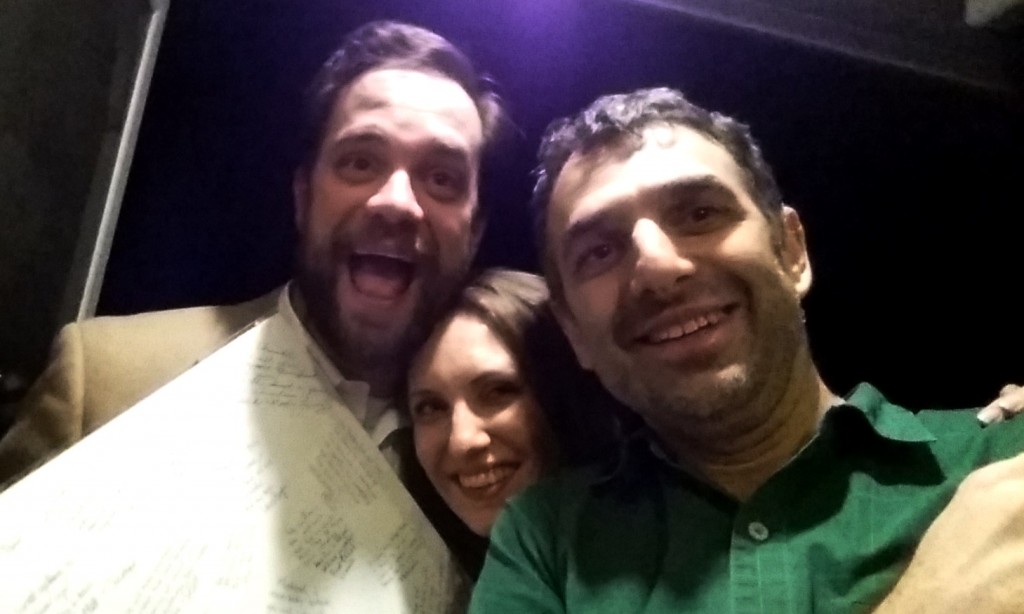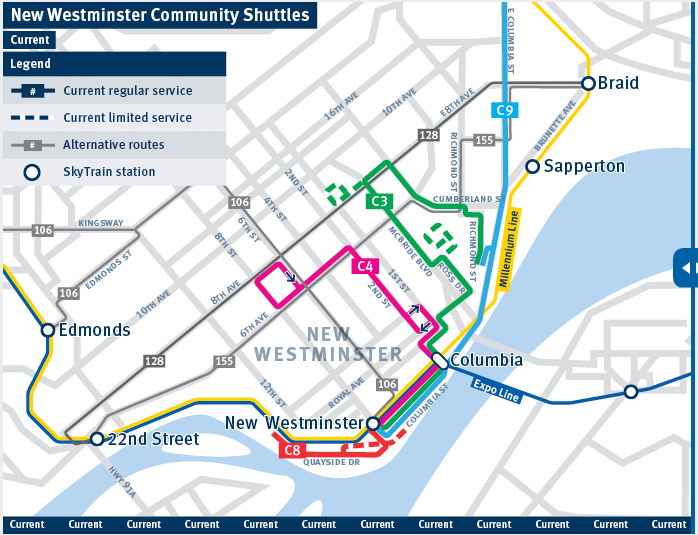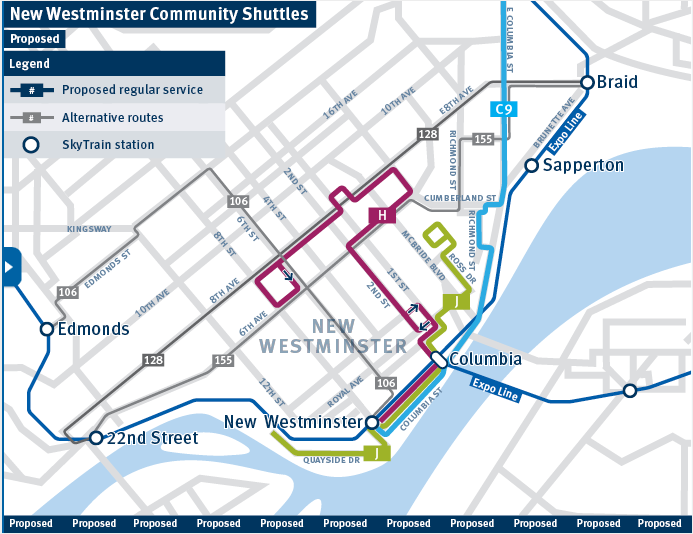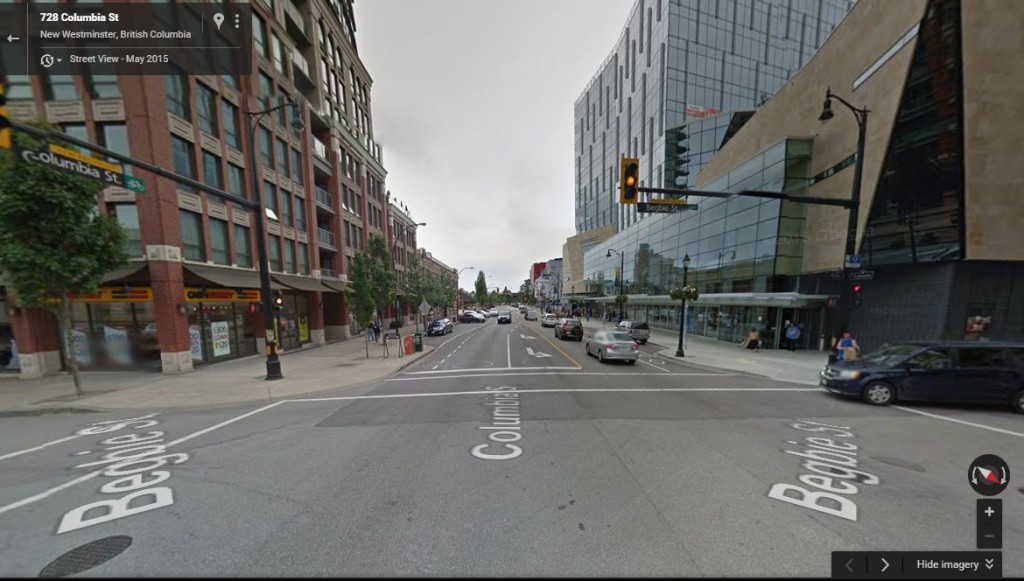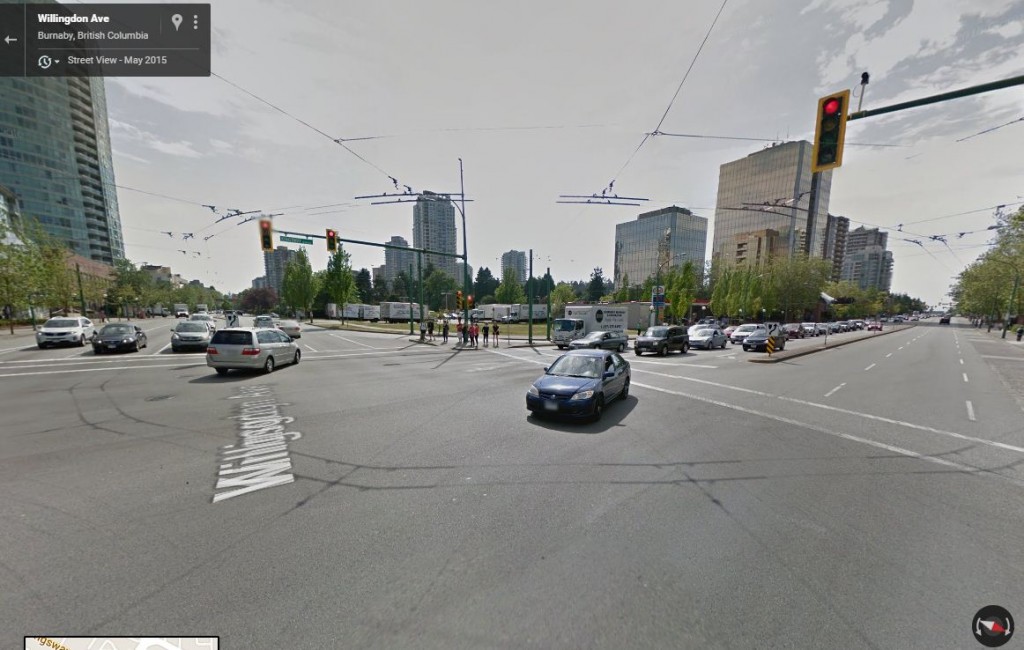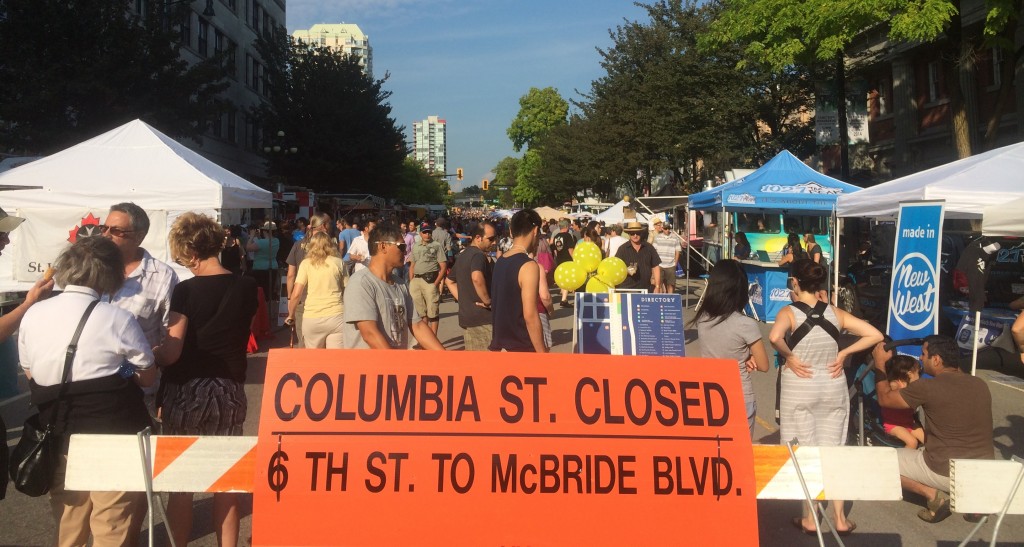There was perplexing opinion piece in the Vancouver Sun on Monday that referenced the City of New Westminster’s efforts to perform public outreach as part of its Official Community Plan process. Unfortunately, the writer (a New Westminster resident) seemed to take the position that the City was trying to sneak a bunch of changes through in defiance of our residents, and that any evidence of consultation is either “dilly dallying” with “fairy tale jargon” or evidence that planning is sprinkled in “pixie dust”.
It started with the complaint that a Dog Park had been added to Moody Park without her consultation. After two years of public calls for a dog park at that location and more than a year of open houses, council meetings, postings in the local paper, attendance by paid City staff at several Residents Association meetings, on-line call for input on the City web page, poster advertising at key park locations, stories in the local paper, draft models of various layouts, letters to the editor for and against, and a public survey that received more than 450 responses, apparently the City had not done enough to warn her that a pretty common amenity was being added to a park near her home. That sort of sets the stage for the 900 word whinge to follow.
At first, the writer seems concerned that the City is bent on destroying everything she holds dear. Part of it is a complaint, it seems, that either the City doesn’t engage, or people don’t get engaged. Fair enough. However, both underdeveloped theses are undermined by her closing paragraph, which demonstrates her contempt for the very ideas of planning and outreach:
“Because change will happen with or without us, as consultants, developers and urban planners rush to ‘transform’ the region’s long-established neighbourhoods, as if the word transform has been dipped in pixie dust, as if hasty artificial evolution somehow trumps organic natural evolution, which is the way neighbourhoods came together before Metro Vancouver real estate turned into a shell game.”
I cannot even understand what she is saying here, but it seems to suggest that, previous to this OCP, there was no previous OCP, or even zoning. It seems the writer imagines no previous city regulation or planning process shaped our community, and that somehow planning for any change will not only hasten it, but make it “artificial”. Perhaps it is a call to freeze all change in the region, because she has her “leafy enclave” and somehow those thousands of (current and future) New Westminster families who cannot afford adequate housing should just move into a lean-to by the river… you know, keep things “organic” like they used to be. It’s nonsensical.
For the record, the City is required by Provincial legislation to have an Official Community Plan, and to update it on a regular basis. Our current one was first developed on 1998, and has seen a significant amount of (ahem) organic evolution over the last 18 years. It is time for an update, because things have changed since 1998, not the least being a significant shift in the Metro Vancouver real estate market, and in the demographics of our community.
Do you want to know what bugs me enough about this article that I am writing an lengthy retort? Is it the laziness inherent in the lack of fact checking? Is it the failure of a person whose job it is to inform people to provide any useful information? Is it the condescending language and entitled whingy spirit of the piece?
No. What pisses me off is that the writer is somehow both ignorant and contemptuous of the incredible job that our City staff have done over the last two years making something as dull and arcane as an Official Community Plan update into something that people from across the City have found engaging, interesting and rewarding to take part in. Our staff have developed a comprehensive outreach plan unprecedented in the City, have created hard copy and on-line resources, have found a huge variety of inspired ways to take these materials out to the places where people are, and have begged and pleaded for people from across the City, from different walks of life, from different family and housing stages, to provide input. And the citizens of this city have responded in an equally unprecedented way, showing up and taking part in big numbers.
The City has gone out of its way over the last 2 years to make this OCP review process open, transparent, and accountable. It has not just received public comment, it has gone out for more than 16 months actively seeking public comment. Have we done enough? Let me provide a quick summary:
- Staff have provided information and feedback materials while attending at least one meeting of every one of the 10 Residents’ Associations and the Quayside Community Board;
- Staff have presented reports to 11 Council advisory committees and commissions, all made up of residents of the City, including the transportation, heritage, environment, planning, youth, seniors, multicultural, and economic development committees;
- There have been no less than eight (8) public reports to Council on the process and preliminary feedback;
- Over the last two summers, staff have set up “Pop up Planning” booths at numerous community events, including Uptown Live, 12th Street Music Festival, the Pride Street Festival, the Royal City Farmers Market, Sapperton Day, the Summer Sizzle, Pecha Kucha, Canada Day in the Park, etc.;
- Staff put together a stakeholder group of a couple of dozen volunteer residents and business people from across the City, representing different neighbourhoods and demographics, specifically to advise staff on better ways to reach out to their neighbourhoods and cohorts, and improve how the public engagement operates;
- Staff held an inspiring workshop entitled “Love Our City” where more than 170 people sat down for a full day with maps and pens and talked about the things they loved and didn’t love about their neighbourhoods. They identified key features, “community hearts”, and challenges that residents wanted to see addressed on the next 20 years;
- More recently, a similar multi-hour open workshop was held to discuss different housing forms, the opportunities and challenges, and to discuss how or where different forms may fit, on a neighbourhood-by-neighbourhood basis. More than 150 people attended this day-long event.
- There have been more than dozen “travelling workshops” at places like Century House, the Sapperton Pensioners Hall, the River Market, and Connaught Heights School, organized on different days of the week and at varying times, sometimes mid-day, sometimes in the morning, sometimes in the evening, to make it as flexible as possible to fit everyone’s schedule. There are three more scheduled in the month ahead (see below);
- There are current and ongoing efforts to connect better to underrepresented groups such as lower income residents, people with specific housing or transportation needs, and single parents, through organizations like the New West Family Place, Elizabeth Fry Society, Spirit of the Children Society, Immigrant Services Society, and the Interagency Council;
- Feedback has been sought (and for the most part received) from Fraser Health, the Development Community (including UDI), Metro Vancouver, Adjacent municipalities, the Ministry of Transportation, the Ministry of Environment, Port Metro Vancouver, School District #40, TransLink, and the Qayqayt first nation;
- The ongoing on-line surveys have generated (at last count) more than 700 individual responses, and those responses keep coming in;
- Besides the native advertising of just being in your face at every community event over the last two years, staff have advertised on the City website and the City Page in the local newspapers, have purchased other newspaper ads, have put up posters at all City buildings (City Hall, Community Centres, the Library, etc.), have performed mail drops across the City, have even hand-delivered in some neighbourhoods where the mail drops were less effective, have used the illuminated billboards at every entrance/exit to the City, Facebook Ads and newsletters. They even arranged to have the School Board provide notices for every student in the district take home to their parents.
Personally (and I am not alone on Council here), I have tried to spread the word in any way I could. I helped organize an open house that brought together 50 young professionals – engineers, architects, chefs, software developers, marketing gurus, people with young families worried about their future housing needs and affordability, most who don’t traditionally take part in “City open houses” about planning issues. We got together at the River Market for a 2-hour workshop on housing types and density, and they provided incredibly varied, intelligent, and valuable input. I have written several blog posts, including one with step-by-step instructions on how to complete the City’s on-line engagement portal. I have attended dozens of workshops, open houses, and community meetings – not to do the job of staff in explaining the process, but just to hear what people are saying in response, and to encourage people to provide feedback directly to the City in any way they can. With the exception of the one meeting Christopher Bell kicked me out of because he felt he couldn’t have a “frank discussion” with me in the room, I heard valuable and sometimes surprising input, and have learned a great deal about the diversity of opinion in the City.
So if the author’s complaint is a lack of public engagement, my question is – what would she have us do? Because we are ready and willing to do whatever we need to in order to get a better sampling of the community. And the job is not done, as there is a bunch more public consultation to come.
If Ms. Fralic (as some have suggested) was just trying to goad people into getting more engaged, there are opportunities for you to take up her charge, which I whole-heartedly encourage you to do. Here are a few of the ways you can do so:
There are three more open workshops, January 30, February 6 and February 13, one of them only steps from the Dog Park of Concern. They are open to everyone – but it is way helpful if you register ahead of time so we know how many chairs to have and how much materials to prepare (you can even review the materials ahead of time). These are in the middle of a weekend day when most are available, and there will be both free childminding to make it easier for families to participate, and foodtrucks on site in case you get peckish during the three-hour event. We really want to remove any barrier to you attending.
There is still the on-line survey, and if you take a bit of time to fill it out, it is actually quite fun and interactive. If you want a step-by-step guide on how to complete it, I tried to throw one together here. Let me know if you need more help with it.
If the on-line thing isn’t for you, and you want paper copies of the materials to mark up and send in with your suggestions, or if you have a group of people who would like a little more guidance to help go through the materials so you can provide feedback, you can Contact the City Planning Department (email ourcity@newwestcity.ca or phone 604-527-4532) and they will do that for you. Or contact me (see contacts below) and I’ll arrange it for you.
And of course, any comments you have, good, bad, or otherwise can be sent to the Planning Department above, or to Mayor and Council.
If, somehow, you have missed all of these opportunities to provide input, and still want to comment on the OCP, there will be another entire round once the framework of a new OCP is developed. Which is another point Ms. Fralic could have fact-checked: Up to now, we have been collecting people’s input into what they want to see, and we have (as part of that) put a few very draft concepts together, but we have not yet created a new comprehensive plan. Everything you have seen so far (and this was made explicit by staff at every event where they were presenting) is pure speculation used to provide media to gauge public opinion. It is not the actual plan for a new OCP. Because we are too deep into public engagement for staff to have developed that yet.
The draft land use plan for a new OCP will be developed by staff this spring, and if it passes a first trip past Council, it will again go out for more public consultation. You will, at that time, again have the opportunity to come to public meeting, read materials on-line, provide feedback by computer, by mail, by phone or in person.




